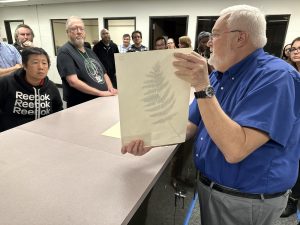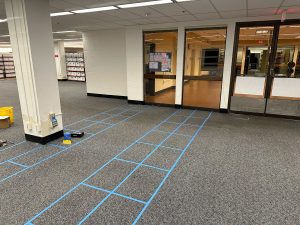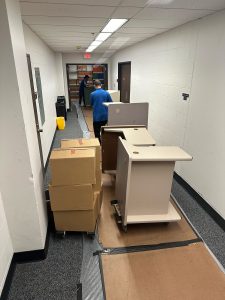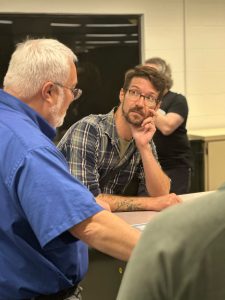The USF Herbarium is one of the university’s first research collections, established in 1958, only two years after the founding of USF in 1956. Interesting fact: The Herbarium’s first specimen was collected by none other than USF’s founding president, John S. Allen.
As digital collections become more the norm, the physical collection of the USF Herbarium remains a unique outlier in an increasingly online world. In March of 2024, the USF Libraries and the USF College of Arts & Sciences partnered to transfer the USF Herbarium to the Libraries with the goal of fostering an environment to proactively manage, grow, and enhance the use of this distinctive and impressive research collection; one of the largest herbaria in the United States and the second largest in Florida.
USF Libraries Dean Todd Chavez says of the partnership, “For centuries, libraries have served as institutions of record for knowledge, actively acquiring, organizing, and disseminating the data and information that undergirds understanding of our world.”
Chavez continues, “The USF Libraries have developed collections comprising multiple information formats including print publications, sound and visual recordings, datasets, and digital surrogates for all of the above. We believe that a ’brave new world’ for collections exists in capturing material from the natural world, including in our specific case, the extensive botanical information represented by the USF Herbarium. To that end, we have collaborated with the College of Arts & Sciences to initiate this new direction for the USF Libraries collections. As a research collection, the USF Herbarium is an unparalleled resource that can advance our understandings of biodiversity and the impact of climate change on Florida’s environment.”

It is no small feat to plan and coordinate the movement of a collection numbering in the hundreds of thousands. Housing over 270,000 specimens and more than 10,000 books and related resources, this rich collection now resides in the basement of the USF Library at the USF Tampa location. Getting it there took weeks of planning and some very heavy lifting.

More than two hundred steel cabinets filled with specimens were brought across the USF Tampa campus and meticulously placed on pre-planned footprints within the Library. Space is limited for a physical collection of this size, but it is also important for the Herbarium’s materials to be accessible and available for further research. Herbaria are also meticulously organized, which meant that the library team had to fit the collection in its new home in a specific order.

David Rosa, Operations Manager, Building and Security for the USF Tampa Library, worked alongside Chris Kiahtipes, Ph.D., Curator of the Libraries’ Florida Environment and Natural History (FLENH) collections, to ensure the USF Herbarium transfer was as efficient as possible and that the collections arrived intact.
As cabinets were moved and organized, USF Herbarium student assistants, Dr. Kiahtipes, and herbarium staff oversaw that the integrity and organization of the collections were preserved throughout the move, ensuring the Herbarium’s functionality in its new location.

“People interact with the Herbarium in lots of different ways,” says Kiahtipes. “It is a perpetually growing collection that receives new plant specimens from the public, the USF community, nonprofit organizations, state government agencies, or even private firms.”
Kiahtipes adds, “Our herbarium is a rich resource for novel research in plant taxonomy, biology, chemistry, adaptations to climate change, and more. The USF Herbarium is also the backbone of the Florida Plant Atlas, which is a critical resource for providing up-to-date information on what plants we find in our state, how to identify them, and where they are found.”
Visits to the USF Herbarium are by appointment only, but the Atlas of Florida Plants is an online tool to interact with the herbarium collections. The Herbarium Specimen Search feature of the Florida Plant Atlas can be used to search by classification, family, genus, or habitat. The results include digitized specimens, other herbaria they occur in, and even information on identifying the plant.